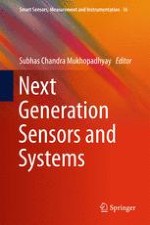2016 | OriginalPaper | Buchkapitel
A New Scheme for Determination of Respiration Rate in Human Being Using MEMS Based Capacitive Pressure Sensor
verfasst von : Madhurima Chattopadhyay, Deborshi Chakraborty
Erschienen in: Next Generation Sensors and Systems
Aktivieren Sie unsere intelligente Suche, um passende Fachinhalte oder Patente zu finden.
Wählen Sie Textabschnitte aus um mit Künstlicher Intelligenz passenden Patente zu finden. powered by
Markieren Sie Textabschnitte, um KI-gestützt weitere passende Inhalte zu finden. powered by
